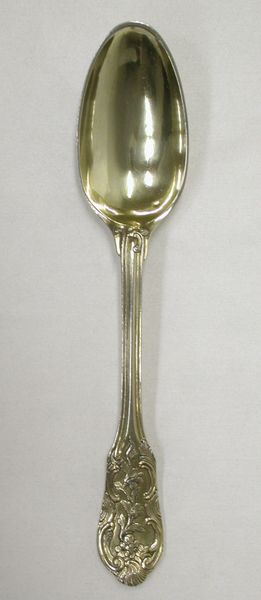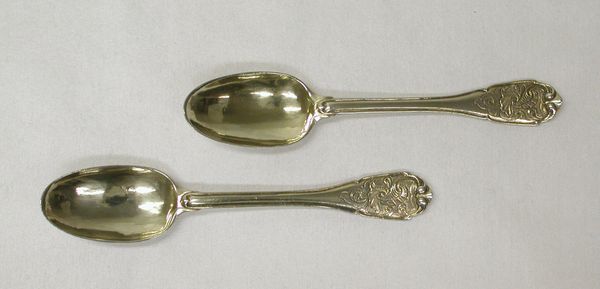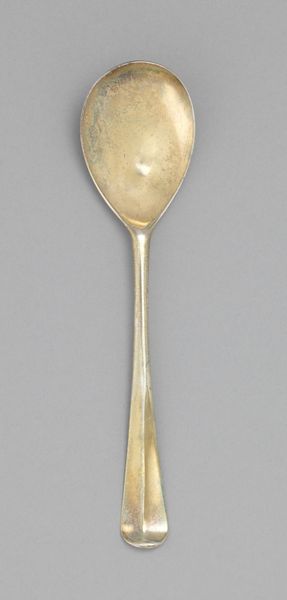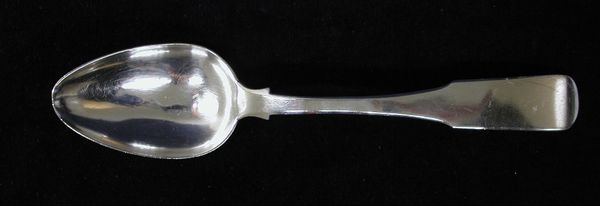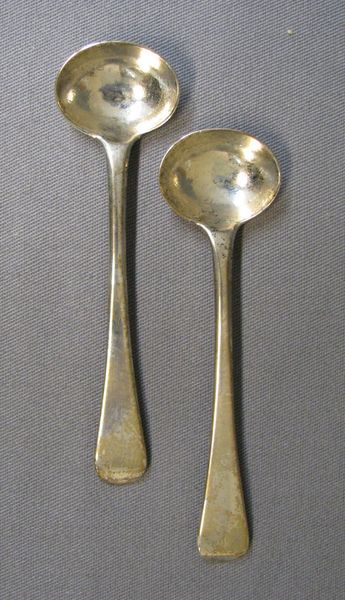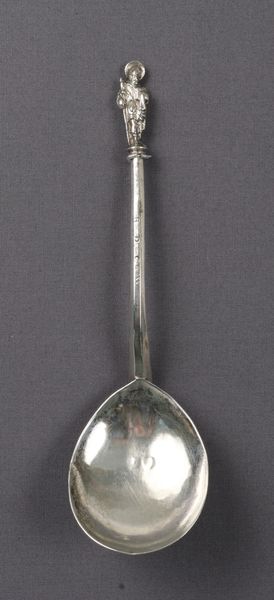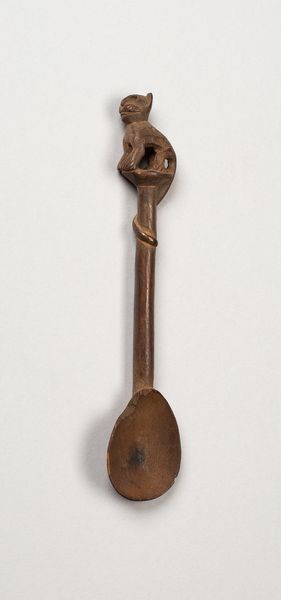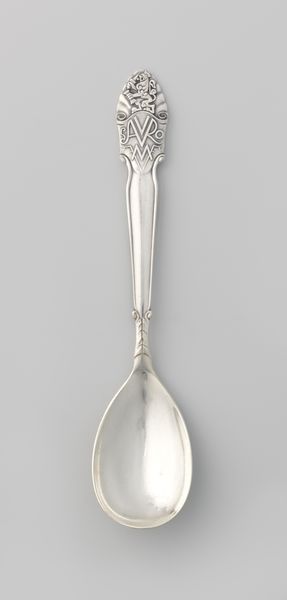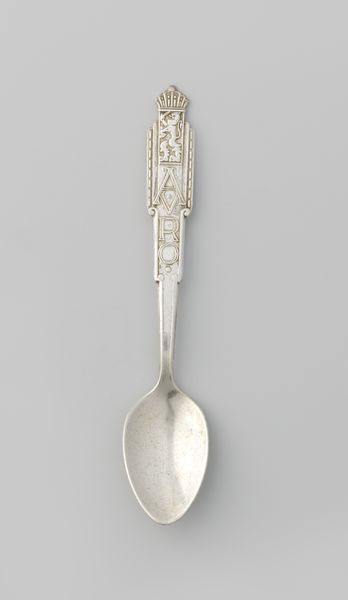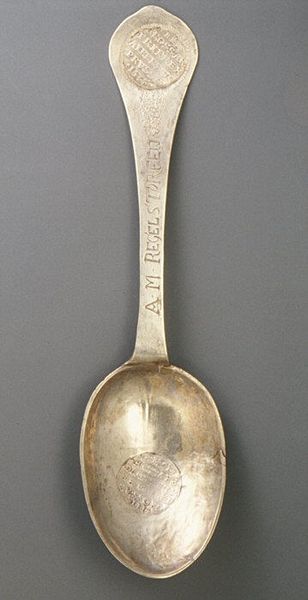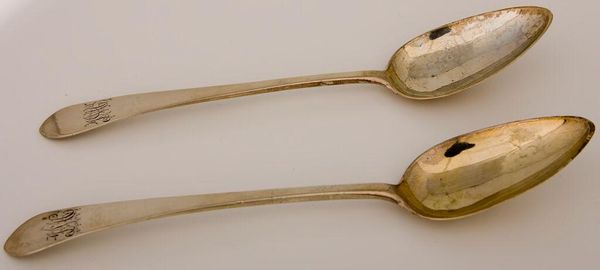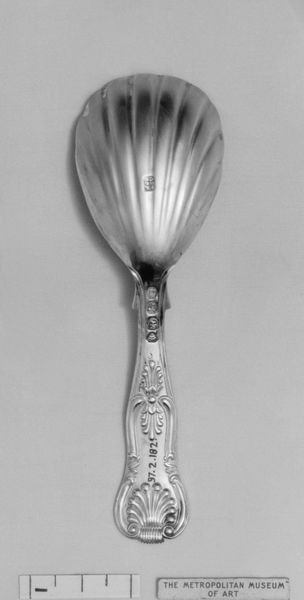
silver, metal, sculpture
#
silver
#
baroque
#
metal
#
sculpture
#
decorative-art
Dimensions: Overall: L. 7 7/8 in.
Copyright: Public Domain
Curator: This is a silver fork created sometime between 1738 and 1750, currently held at the Metropolitan Museum of Art. Attributed to Johann Beckert V, it represents the height of Baroque decorative arts. Editor: Wow, just looking at this fork makes me feel fancy! It’s so ornate, even a simple act like eating transforms into a statement of luxury and privilege. Can you imagine holding this to eat every day? Curator: The historical context is indeed significant. These decorative objects reflect a period of immense social stratification, colonialism and inequality, where even the tools for eating became emblems of wealth and power for the elites. Consider who was afforded access to these silver objects, and who labored to produce and serve them? Editor: It's wild, isn’t it? The craftsmanship is incredible—the detail in those floral carvings is just mesmerizing. And you just made me think: while the artist is celebrated, who polished this beauty? Who was serving dinner with this thing and what stories could *they* tell? Curator: Precisely! Examining the Baroque style within an intersectional frame challenges us to consider questions of race, class, gender, and labor and power relations. The excessive ornamentation of the fork—the elaborate foliage and shell motifs—speaks to Baroque aesthetics of grandeur but is often a gloss on grim conditions of society at the time. Editor: It makes you rethink the everyday, right? We usually just grab any old fork from the drawer, but back then, this object carried a heavy weight, quite literally, of cultural and economic symbolism. Today a dishwasher takes care of all that drudgery. We don't always recognize how far we've come in addressing the power relations baked into this sort of conspicuous consumption. Curator: Absolutely. Analyzing this fork through the lens of its original era makes us aware of the complex interactions between decorative art, social stratification, and labor practices. It becomes a symbol that encapsulates so much of what was going on at that moment. Editor: Totally. I think I'll stick to my stainless steel for now, but it’s interesting how something as small as a fork can open up such a vast discussion about art, history and the complexities of inequality. It sure puts lunchtime into a whole new light!
Comments
No comments
Be the first to comment and join the conversation on the ultimate creative platform.
